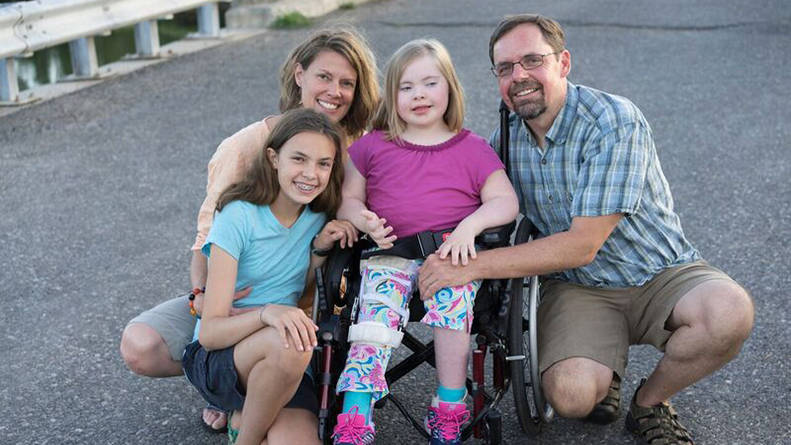A rare disease calls for a special mouse model
- By Joyce Dall'Acqua Peterson

For the rarest of rare genetic conditions, a one-of-a-kind mouse could light a path to new treatments.
Hereditary neuropathies are neurological disorders that cause damage to the peripheral nerves, the bundles of nerve cell fibers that connect the brain and spinal cord to muscles and sensory organs.
Charcot-Marie-Tooth (CMT) disease is, overall, the most common hereditary neuropathy, affecting one in about 2,500 people. But CMT includes more than 80 different genetic mutations, some very rare, and each with very different disease processes and symptoms.
Talia Duff was born with Down syndrome, a developmental condition caused by a full or partial extra chromosome 21. By the age of four, Talia was still not able to walk on her own, and her family noticed signs her strength was declining further. After years of failed treatments, surgeries and unanswered questions, she was finally diagnosed with CMT4J, a tiny subset of CMT, with only about 22 known cases worldwide.
Talia’s mother, Jocelyn Duff, says as challenging as it was, the diagnosis provided the family with a new focus.
“We learned that gene therapy offers great promise for a treatment or cure for single-gene defects like CMT4J," Duff says. "Unfortunately, though, ultra-rare diseases like Talia’s receive little attention or funding.”
Accordingly, the Duff family created the CureCMT4J Talia Duff Foundation to accelerate new research in CMT4J. [rlink id="{4F9AC2C2-23E0-49D6-89CE-AEB9785E6E6F}" tags="" title="Cat Lutz, Ph.D." display="inline"], director of the Mouse Repository and the Rare and Orphan Disease Center at The Jackson Laboratory (JAX), attended the Foundation’s recent research meeting in Washington, D.C., to discuss the best approaches to find new treatments for the disease.
Over the past decade, JAX has become one of the world’s leading research institutes for CMT. Lutz and other JAX researchers are the recipients of a new grant to develop mouse models for CMT and other peripheral neuropathies. JAX Professor Rob Burgess has published significant research findings in another CMT variant, CMT2, and is the principal investigator of several grants to investigate CMT, as well as of the JAX Center for Precision Genetics.
Lutz says the first step is to find the mouse model with a genetic profile that most closely matches CMT4J.
“Very shortly we will be testing some emerging therapeutics on the best models we have available now,” Lutz says, “and we will be working closely with the Talia Duff Foundation to make a more precise mouse model of CMT4J.”
Time is of the essence for Talia, her mother says. “The disease is progressing rapidly. In less than a year CMT4J has taken Talia from walker to wheelchair, robbed her of strength in her arms, and weakened the muscles and nerves involved with breathing.
“We believe [Lutz] and the other members of our research team are our best hope for Talia and other patients with this rare disorder. We also believe in the greater good that can come of our research--that by pushing forward gene therapy for yet another rare disease we can pave the way for other rare diseases to find and fund a cure.”